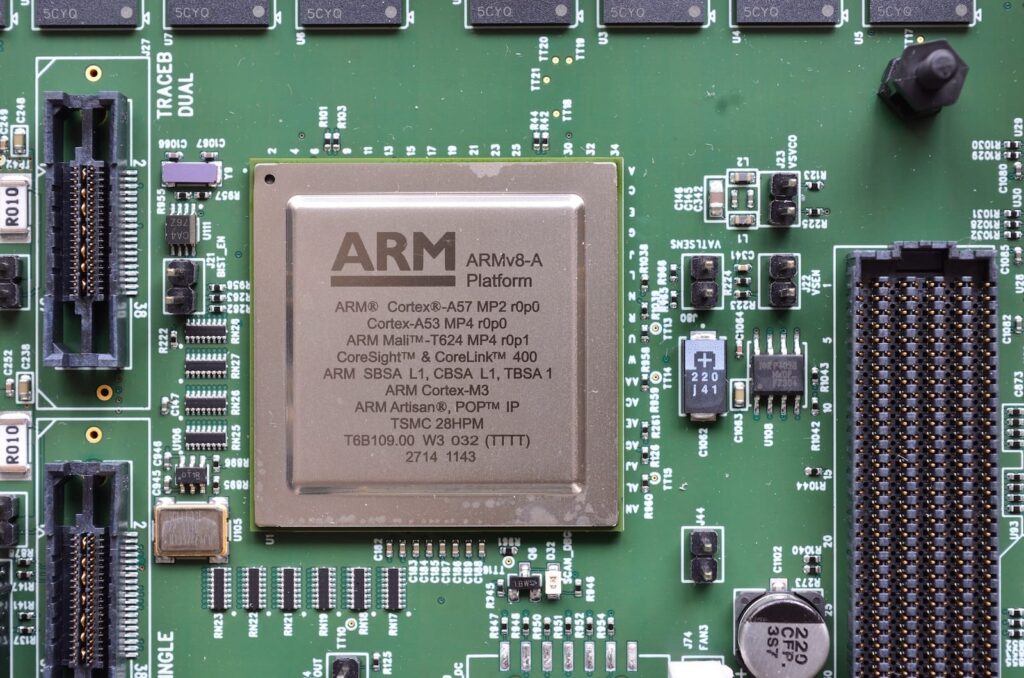ARM processors have evolved from being exclusive to mobile phones to becoming a critical component in a wide range of technological devices. Their efficient, flexible, and scalable architecture has driven adoption across industries such as computing, home automation, automotive, and even data centers. As the tech industry moves toward energy-efficient and high-performance solutions, ARM processors are emerging as the future standard.
Below, we explore the devices that use ARM processors, their impact on the PC market, and the reasons behind their growing popularity.
Where Are ARM Processors Used?
ARM architecture has proven to be highly versatile and adaptable, making it a preferred choice for various devices. Its energy efficiency and low-power design make it ideal for applications requiring mobility, long battery life, and minimal heat generation.
What Types of Devices Require ARM Processors?
1. Mobile Phones and Tablets
The mobile sector is the largest consumer of ARM processors, accounting for nearly 100% of the market. From Android devices by Samsung, Xiaomi, and OnePlus to Apple’s iPhones, all rely on ARM-based chips due to their energy efficiency and optimized performance.
Key advantages of ARM processors in mobile devices:
- Low power consumption, leading to extended battery life.
- AI optimization, enhancing computational photography and virtual assistants.
- Advanced connectivity, supporting 5G, Wi-Fi 6, and Bluetooth technologies.
- High integration, combining CPU, GPU, modem, and AI processing units in a single chip.
Leading manufacturers such as Qualcomm (Snapdragon), Apple (A-series and M-series), MediaTek, and Samsung (Exynos) continue to develop increasingly advanced ARM-based processors to enhance user experience.
2. Smart Home Devices and the Internet of Things (IoT)
The smart home revolution has made ARM processors essential in various automation devices, including:
- Smart speakers (Amazon Echo, Google Nest).
- Security cameras with cloud connectivity.
- Smart thermostats such as Nest and Ecobee.
- Connected plugs and bulbs, controlled via mobile apps.
ARM processors play a crucial role in these devices due to:
- Energy efficiency, ensuring prolonged operation without frequent recharging.
- Integrated connectivity, optimized for Wi-Fi, Zigbee, and Bluetooth networks.
- Cost-effectiveness and ease of implementation, facilitating widespread adoption in homes and businesses.
With the continued expansion of IoT, ARM processors are driving the creation of interconnected ecosystems that enhance automation and environmental control.
3. Portable Gaming Consoles
The gaming industry has also adopted ARM processors for portable consoles, with notable examples including:
- Nintendo Switch, powered by an ARM-based chip developed by NVIDIA.
- Steam Deck and ASUS ROG Ally, exploring ARM versions to optimize energy efficiency.
- Cloud gaming devices from Logitech and Razer.
ARM processors in gaming offer:
- Low power consumption, crucial for longer gaming sessions.
- Optimized graphics processing, enhancing visual experiences.
- Support for cloud gaming, enabling high-end gaming without requiring powerful local hardware.
With the rise of mobile gaming and cloud computing, ARM processors are becoming a viable option for the next generation of portable consoles.
4. Wearables and Smart Technology
Smartwatches, fitness trackers, and wireless earbuds depend on ARM processors due to their energy efficiency and ability to integrate multiple sensors. Leading devices include:
- Apple Watch, utilizing ARM chips designed by Apple for optimized performance and battery efficiency.
- Fitbit and Garmin, relying on ARM processors for health and activity tracking.
- Wireless earbuds, such as AirPods, which leverage ARM processors for improved battery life and audio processing.
Key benefits:
- Extended battery life, enabling multi-day usage without frequent charging.
- Optimized connectivity, enhancing call and voice control experiences.
- Real-time data processing, ideal for biometric sensors and health tracking.
5. Automotive Industry
The automotive industry has integrated ARM processors into critical areas such as:
- Infotainment systems, found in Tesla, BMW, and Mercedes-Benz vehicles.
- Driver assistance software, enhancing road safety features.
- Autonomous vehicles, processing data from cameras and sensors in real time.
ARM processors excel in automotive applications due to:
- Efficient data processing, essential for assisted driving and safety systems.
- AI-powered decision-making, improving autonomous vehicle capabilities.
- Compatibility with multiple systems, ensuring seamless integration with sensors and advanced software.
ARM Processors Are Taking Over the PC Market
One of the most significant recent developments is the entry of ARM processors into personal computers. Apple revolutionized the industry with its Apple Silicon (M1, M2, M3) chips, proving that ARM can outperform Intel and AMD’s x86 processors in efficiency and performance.
Major advantages of ARM in PCs:
- Longer battery life, with laptops offering over 20 hours of continuous use.
- Reduced heat generation, minimizing the need for noisy cooling fans.
- Energy efficiency, enabling thinner and lighter devices.
Other manufacturers, such as Qualcomm (Snapdragon X Elite) and Microsoft, are also developing Windows-optimized ARM laptops, expanding the competitive landscape.
Why Are ARM Processors So Popular?
ARM processors dominate the tech industry for several key reasons:
- Superior Energy Efficiency
- Consumes less power than x86 chips, allowing for compact devices with extended battery life.
- Scalability and Versatility
- Can be used in devices ranging from smartwatches to high-performance servers.
- Lower Manufacturing Costs
- More affordable to produce than x86 processors, making them accessible for a broader range of applications.
- Expanding Market Presence
- Thanks to Apple and Qualcomm, ARM chips are now gaining traction in the PC segment.
- Optimized for Artificial Intelligence
- ARM processors integrate dedicated AI units, enabling advanced machine learning applications in smartphones, PCs, and data centers.
Conclusion
ARM processors have transformed the technology landscape, expanding from mobile devices to PCs, automotive applications, and IoT. Their energy efficiency, scalability, and cost-effectiveness make them an unbeatable choice for a wide range of devices.
As major tech companies like Apple, Microsoft, and Qualcomm continue to invest in ARM-based architectures, the adoption of these processors is expected to accelerate, solidifying ARM as the standard for the next generation of global technology.

